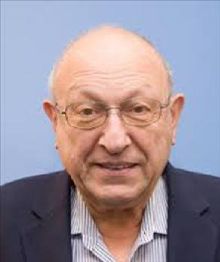
 Speaker "Ephraim Suhir" Details Back
Speaker "Ephraim Suhir" Details Back

-
Name
Ephraim Suhir
-
Company
SBIR ERS
-
Designation
CEO
Topic
Human-in-the-loop (HITL): probabilistic predictive modeling (PPM) of an aerospace mission/situation outcome
Abstract
Improvements in safety in the air and in space can be achieved through better ergonomics, better work environment, and other efforts of the traditional avionic psychology that directly affect human behaviours and performance. There is also a significant potential for further reduction in aerospace accidents and casualties through better understanding the role that various uncertainties play in the planner’s and operator’s worlds of work, when never-perfect human, never failure-free navigation equipment and instrumentation, never hundred-percent-predictable response of the object of control (air- or spacecraft), and uncertain-and-often-harsh environments contribute jointly to the likelihood of a casualty. By employing quantifiable and measurable ways of assessing the role and significance of such uncertainties and treating a human-in-the-loop (HITL) as a part, often the most crucial part, of a complex man-instrumentation-equipment-craft-environment system, one could improve dramatically the state-of-the-art in assuring aerospace operational safety by predicting, quantifying and, if necessary, even specifying an adequate (low enough) probability of a possible accident. Nothing and nobody is perfect, and the difference between a highly reliable object, product or a mission and an insufficiently reliable one is “merely” in the level of the never-zero probability of failure. Application of the probabilistic predictive modeling (PPM) concept provides therefore a natural and an effective means for reduction in vehicular casualties. When success and safety are imperative, ability to predict and quantify the outcome of an HITL related mission or a situation is a must. The application of the PPM concept can improve therefore the state-of-the-art in understanding and accounting for the human performance in a vehicular mission or a situation. While the traditional statistical human-factor-oriented approaches are based on experimentations followed by statistical analyses, the PPM concept is based on, and start with, physically meaningful and flexible predictive modelling followed by highly focused and highly cost effective experimentations geared to the chosen governing model(s). The PPT concept enables one to quantify, on the probabilistic basis, the outcome of a particular HITL related effort, situation or a mission. If the predicted outcome, in terms of the probability of failure, is not favourable, then an appropriate sensitivity analysis (SA) based on the available algorithms can be effectively conducted to improve the outcome. With the appropriate modifications and generalizations, this cost-effective and insightful approach is applicable to numerous, not even necessarily in the vehicular domain, HITL related missions and situations, when a human encounters an uncertain environment or a hazardous off-normal situation. The approach is applicable also when there is an incentive to quantify human’s qualifications and performance, and when there is a need to assess and possibly improve his/her role in a particular mission or a situation. The general concepts are illustrated in this analysis by addressing several typical aerospace HITL related problems